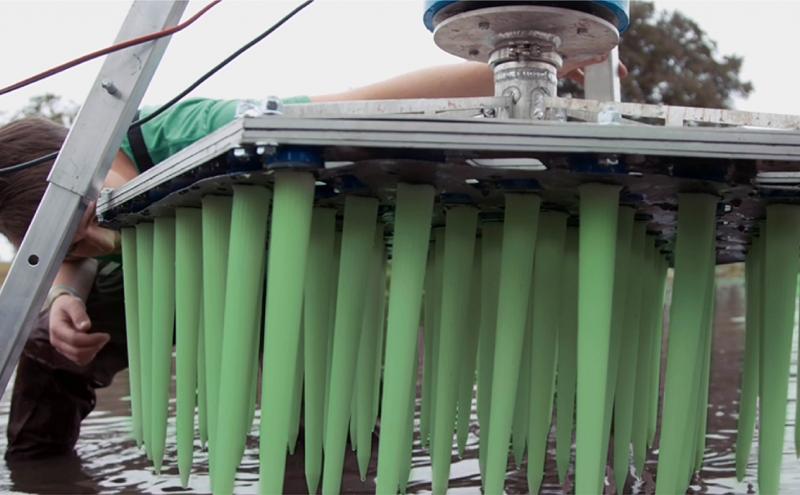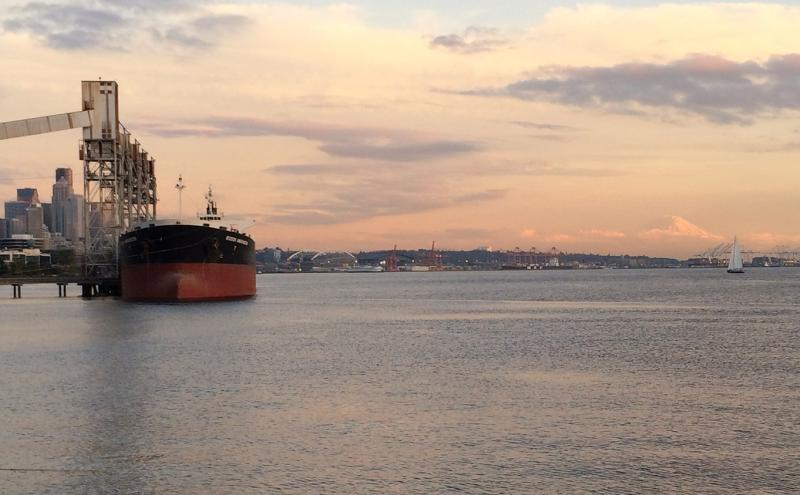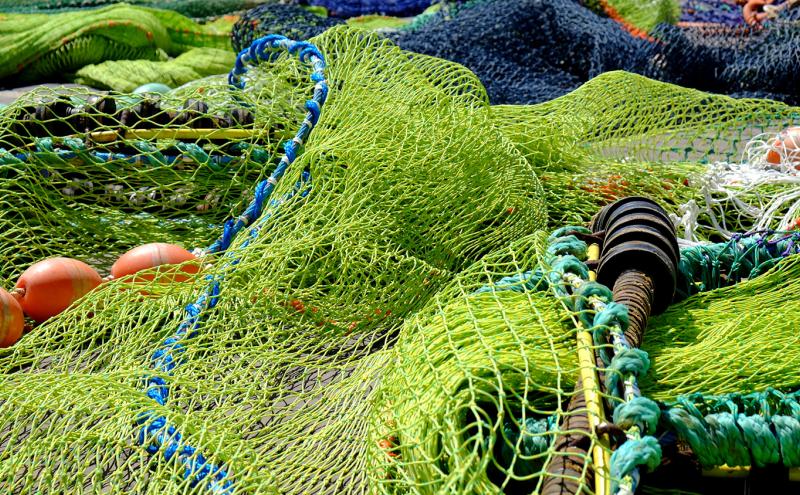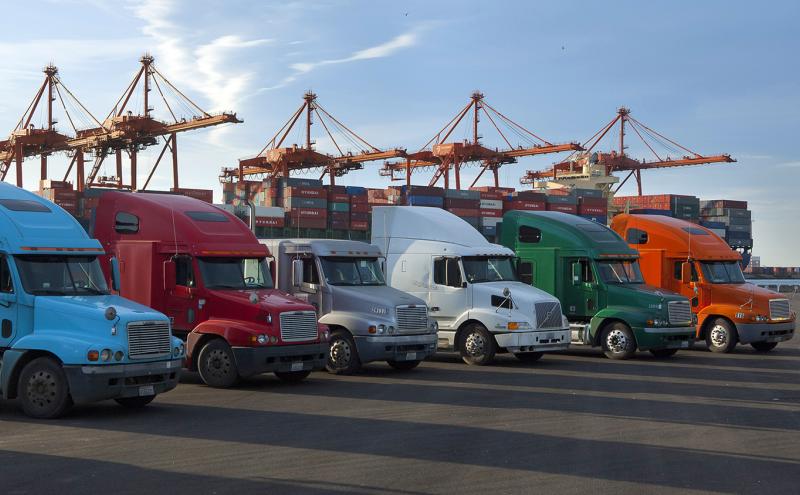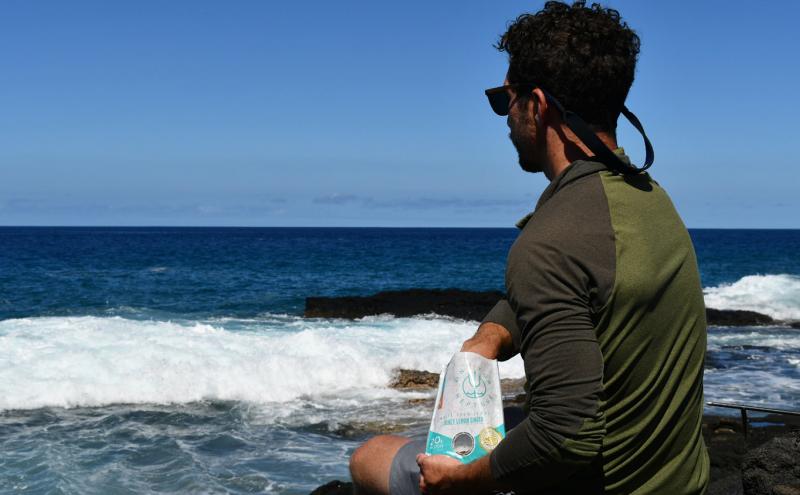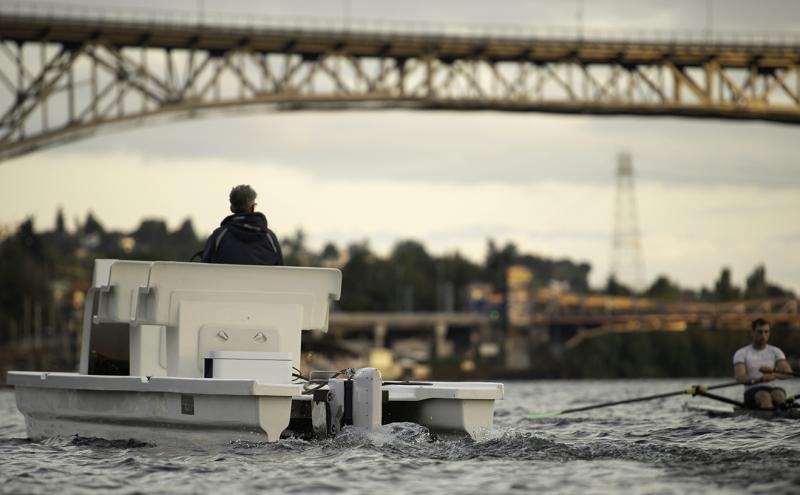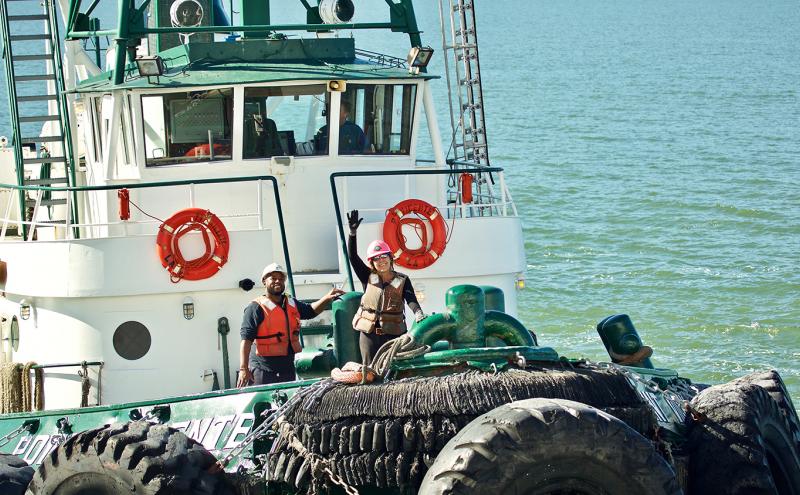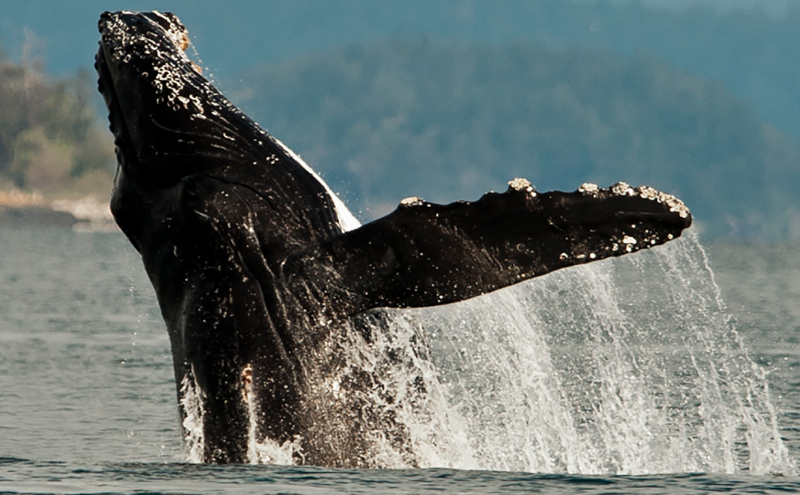
Washington Maritime Blue, the Port of Seattle, and WeWork Labs have partnered to launch Washington’s first maritime accelerator to help maritime companies innovate and grow. New ideas in one of the most traditional sectors in Washington are critical for a thriving economy and to protect our planet, precious natural resources, and ocean life.
Washington Maritime Blue and the Port are partnering again to launch the next cohort of the Maritime Blue Innovation Accelerator. Applications for the new cohort are open through Nov. 20.
This series showcases the 11 companies participating in the inaugural cohort. These companies worked for four months out of WeWork Labs’ Seattle location with mentors and advisers to help navigate challenges. In April, the startups shared their innovative solutions in a Virtual Showcase.
Scott Veirs and his father Val Veirs were both at major turning points in their careers and lives when the whales called to them.
Scott was finishing his Ph.D. from the University of Washington’s (UW) oceanography program while Val was retiring to San Juan Island after a long career teaching physics at Colorado College. Val installed a hydrophone, a microphone designed for recording underwater sound, outside his home in the water just south of Roche Harbor on the west side of San Juan Island, which he soon discovered was the center of the endangered orcas’ summertime habitat.
“Every day he heard an amazing symphony of sounds, giving him insight into the underwater world in the Salish Sea,” Scott said. “I had been studying deep seas bioacoustics (the physics of sound) and was looking for something closer to human impacts on our environment and further from basic science to pursue.”
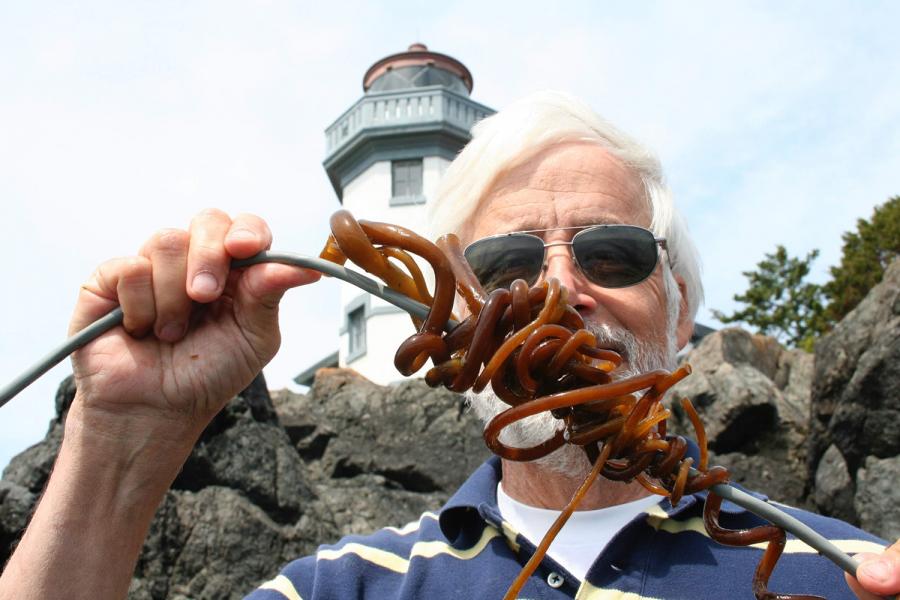
A whale of a tale
In 2003 Scott and Val created an accredited program at UW where they could study these fascinating sounds and teach undergraduates about killer whale bioacoustics and marine environmental issues. From this research, Beam Reach was formed as a 501(c)3 non-profit that enabled students to earn UW credit while taking classes at Friday Harbor Labs and conducting their own research projects aboard the Gato Verde electric sailing catamaran.
“The whales taught us a lot. We came to understand that commercial ships were the main source of underwater noise that orcas experienced,” Scott said.
After 10 years of the program, the whales changed the Veirs’ lives again.
“It became clear to me that our students were unhappy because the whales were changing the timing of when they came to the Salish Sea. The scientific consensus is that this tends to happen because we haven’t done a great job of conserving salmon, so the whales are coming to San Juan Island later and later,” Scott said.
As a result, the whales weren’t near the San Juans in the spring so students couldn’t complete their research within the UW’s spring schedule.
“The whales were not cooperating with our business plan, so we decided to close the education side of Beam Reach,” he said. “It forced us to regroup and rethink how we operate, so we reformed as a social purpose corporation and focused on consulting with a mission to accelerate marine bioacoustics and ocean conservation.”
Innovating with technology was a natural fit for Scott and Val.
“We’re curious, early adopters of technology and innovating with technology in pursuit of marine conservation made sense to us,” Scott said.
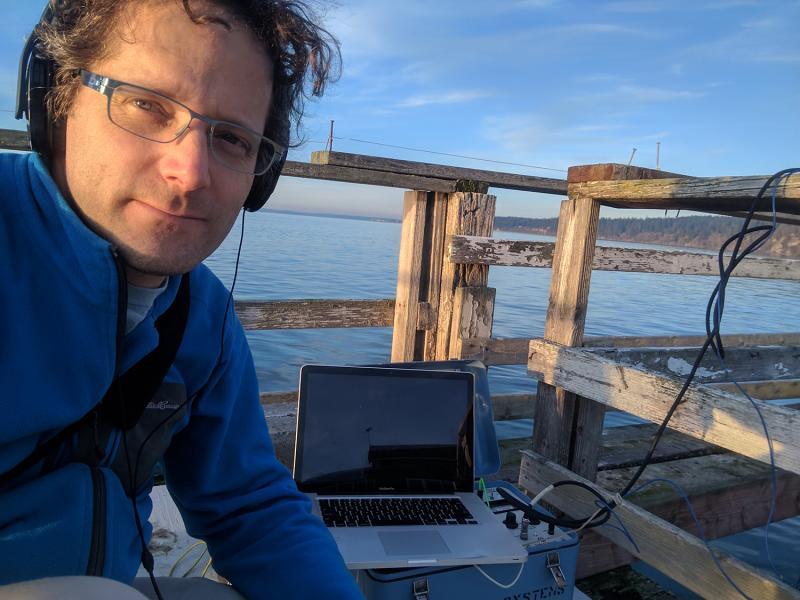
Beam Reach partnered with volunteer “hackers” organized by tech-for-good groups like DemocracyLab, data scientists at UW, and Microsoft to leverage technology to make whale bioacoustics accessible to anyone. In 2017, Beam Reach coordinated a Kickstarter campaign that raised $20,000 to help the Orcasound Hydrophone Network develop a web app that enables citizen scientists to listen for whales.
Beam Reach and 13 other non-government organizations collaborated as Orcasound members to compile and share hydrophone data with a goal to understand the stresses of underwater noise to Southern Resident killer whales and educate the public about the impact of noise on the orca populations.
As Scott blazed a new trail for Beam Reach, he envisioned orca matriarchs as his Board of Directors guiding his business decisions. Family pods are the core unit of orca society, and they are headed by the female matriarch.
“I was really trying to get my head around, ‘what does science say that orcas need? If orcas were my Board of Directors, what would they think is the most important thing to do?’”
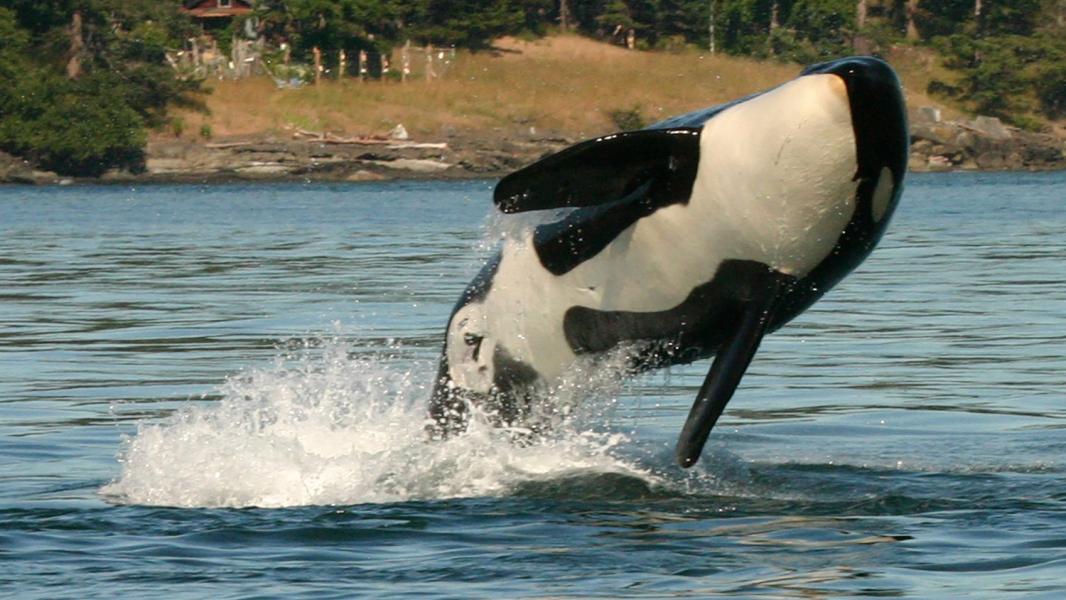
Conservation call to action
Beam Reach continued building and refining a more interactive version of the web app as open-source Orcasound software, participating in DemocracyLab, UW, and Microsoft hackathons to continue to innovate and introduce new ideas to the platform.
“We created an easier way to listen for whales; with our software, people can listen to live underwater noise in web browsers regardless of operating system. The app has evolved and improved to become a tool that works for everyone,” Scott said.
By creating a tool that was easy for anyone to use, Beam Reach and the other cooperating NGOs of Orcasound put out a call to action to help conserve the species.
“We looked at how to make it an effective conservation tool and how to use this tool to increase the supply of salmon from Northern California up to Alaska.”
As of May 2020, users can now sign up for notifications. If a machine or a human hears an orca calling, the user gets a notification to visit the app and listen. Currently, there are 750 subscribers distributed around the globe.
“If the number of people who receive a notification every time a whale swims by a hydrophone keeps growing, that’s an interesting way of affecting change. If people are excited about the concert nature has provided them for free, there is the opportunity to engage them in ocean conservation, whether they are from California, Europe, Seattle, or the San Juans.”
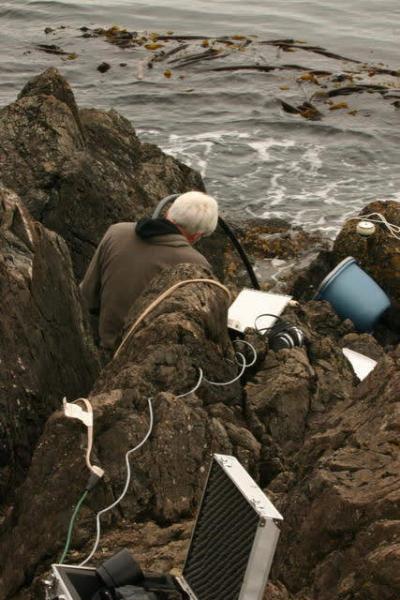
Maritime Accelerator program
In the Accelerator program, Scott networked with organizations like the Port, the Seattle Aquarium, the Washington State Ferries, Puget Sound Pilots, and stakeholders in the shipping industry.
“The program was exciting and definitely helpful in terms of networking and bouncing business model ideas off important stakeholders in Seattle,” he said. “Before COVID hit, it was valuable to work in the same physical space as people from all over the world. I met a lot of people specializing in cool tech that I wanted to learn more about, particularly on the artificial intelligence side.”
Within the Accelerator, Scott discovered a subgroup of founders who were all trained as scientists.
“We’ve continued talking and we’ve even offered some webinars related to commonalities of our experience.”
Sustainability in maritime
Thinking sustainably in the maritime industry can be challenging because environmental impacts are not immediately visible, Scott said.
“Particularly in maritime, sometimes the problems are complex. With underwater noise, it’s really hard to stick your head underwater and hear it for yourself, but the best science shows underwater noise is a problem for orcas.”
Reducing environmental impacts is often about finding balance.
“There are ways to balance economic activity with environmental sustainability, but it’s often complicated and can be expensive. In terms of underwater noise, we look at ‘how do we incentivize the commercial shipping industry to quiet vessels?’ We need to work to minimize impacts as these ships come to and from west coast ports. With bioacoustics, it’s difficult to explain why it’s a problem. It’s hard to experience yourself so it feels very theoretical. That’s why our technology matters — it makes it easier to listen, and you start to realize that ships are the dominant noise in killer whale habitat. Once people realize it’s a problem we can work towards pioneering solutions.”
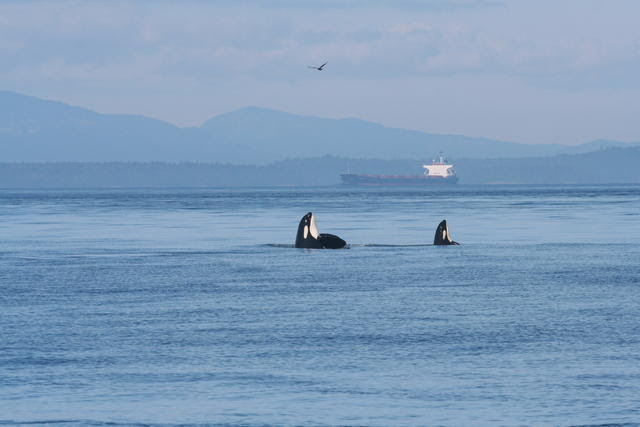
Leveraging technology
Scott said the Maritime Accelerator introduced the founders to innovative ways of operating they may not have considered before.
“The tech industry is such an incredible asset in Seattle; the maritime industry absolutely can leverage the brilliant minds of tech workers. We can hire lots of new talent, software developers, innovators in the traditional start-up realm, and there are a lot of emerging tools that can be profoundly useful. It’s a sweet spot for Beam Reach. In many other parts of the maritime sector there is room for improvement; an app and a little software can fundamentally improve how we do business.”
Listen to whales
- Listen to humpback whales in the Haro Strait.
- Listen to Southern Resident Killer Whale calls
- Listen to Southern Resident Killer Whale whistles
- Learn more and subscribe to receive notifications


